| March | April | 2013-10||
| May | June | August | |
| October | November |
Tuesday, 19 November 2013 Some background: my greenhouse was installed in autumn 1999. It's a lean-to, 8 feet wide by 18 feet long. Glass to ground, twin wall roof. Propane heater, with thermostat set to 50 / 55 degrees Fahrenheit. The through-the-wall fan and two louver units are shut off and covered over for the winter. There are two automatic roof vents, each 8 square feet. Access is from the garage so even in the worst of winter weather I can just walk in without boots and a heavy jacket. Bliss!
This is the time of year that my greenhouse begins to come into its own. Here's a shelf of blooming plants, quite visible from the kitchen. The charming bowl of purple flowers is Streptocarpella saxorum. It's an African violet relative that wants to be kept somewhat cooler and a little drier. Easy to raise from cuttings, and just flowers all winter long.
Of course Christmas cactus, Schlumbergia, are budding up and starting to flower. I move them outdoors for the summer, and leave them outdoors until they get kissed by the lightest frosts, around the end of October.
Admired close up, the flowers are amazingly intricate. Pink is the most readily available color but a little searching (even at the big box stores) can turn up others, such as this luscious tangerine orange. And of course how could I not have bulbs to beautify my winter garden under glass. Here's Nerine undulata (previously known as N. crispa) with umbels of ethereal pink blossoms. The narrow, spidery petals have a sparkle in sunlight, like a fine coating of diamond dust.
Saturday, 19 October 2013 It's October, and time for snowdrops to bloom. No joke, there are snowdrops that flower in the fall.
.
Here's a more recent closeup from 29 October. What a pretty thing. I adore snowdrops at any time of year
Tuesday, 8 October 2013 Flowers shaped like a capuchin monk's hood give Aconitum carmichaelii its common name of monkshood. 'Cloudy' is a monkshood cultivar whose flowers look as though their colors ran in the autumn rain. .
Wish there was a way to photograph fragrance, so you could enjoy the mintier than mint aroma of Pycnanthemum, mountain mint. Salvia koyame is a species of sage from Japan, its soft yellow flowers a pleasing contrast to all the lavender and purple autumn flowers. No frost yet, but some plants are telling me that their growing season is over. Leaves of Sauromatum have begun to yellow, and the stout stems slump to the ground. I must dig now, while I can find them still attached to the tubers. And look at all the seeds.
Other bulbs are finding this the proper time of year to flower. Colchicum autumnale 'Album Plenum', a full patch suggesting the snow that's still far away - or so I hope. .
On May 19th, Musa basjoo looked like this when I uncovered it. Look at my hardy banana now, at the end of the growing season! Wednesday, 28 August 2013 Ivy leaved cyclamen, Cyclamen hederifolium, are certainly hardy enough
Sunday, 25 August 2013 Oxblood liliy, Rhodophiala bifida, is one of the magic rain lilies.
Thursday, 15 August 2013 Crinum make massive, long-necked bulbs popular as garden plants in places with milder climates: Florida, the southern and southeastern states, I keep mine in outsize pots and bring them in for the winter. My friend Steve Silberstein in Wilingboro, New Jersey plants them out, setting the bulbs quite deeply and mulching heavily in winter. I think I'll stay with containerizing mine.
Monday, 24 June 2013 Sunlight shining through the richly colored leaf of Canna 'Tropicana'.
Thursday, 20 June 2013 Lilium martagon, with sturdy petals reflexed like a Turk's turban. Saturday, 15 June 2013 Yes, it is a relative of the dreaded Japanese knotweed that gallops across the countryside.
Tolerant of moist ro wet sites Iris 'Black Gamecock' has petals of velvety richness,
Tuesday, 4 June 2013 Siberian iris are wonderful, easily grown perennials. Most are middle of the border
Perhaps not the tallest of the ornamental onion, however the umbels of Allium christophii
Monday, 27 May 2013 Like the red hot heart of a volcano, glowing satin petals backlit, illuminated by sunlight. Sunday, 19 May 2013 One of my favorite little early peonies, Paeonia ◊smouthii. Deep red single flowers early in the season.
Sapphire berry, Symplocos paniculata, wonderfully in flower and promising a nice crop
.
Musa basjoo, the hardy bananas, uncovered and enthusiastically starting into growth. Monday, 6 May 2013 Brunnera macrophylla with a large cup narcissus Anemone nemorosa Anemone blanda'White Splendour' Arum italicum'Pictum' with Helleborus foetidus Allium ursinium Not certain what allium this is, possibly Allium triquetrum Rhodotypos scandens Rhodotypos scandens, closeup of flower Fothergilla has dainty, honey scented little bottle brushes for flowers,
Cydonia'Cameo' For years I simply called this variegated Japanese knotweed, Fallopia japonica.
Sunday, 28 April 2013 Narcissus 'Foundling' Narcissus poeticus cultivar Narcissus 'Polar Ice' Dicentra spectabilis Primula kisoana Cercis chinensis Leucojum aestivum Mertensia virginica Mertensia virginica closer up Brunnera macrophylla Arisaema thunbergii variety urashima Sanguinaria canadensis foliage Sanguinaria canadensis 'Multiplex' Tuesday, 23 April 2013 So many names for this little bulb - Guinea hen flower, checkered lily, leper's lily,
It is a charming thing, here arising with the first flowers of Brunnera macrophylla. Trillium are also emerging and flowering with enthusiasm. I do enjoy the mottled leaves
at BelleWood Gardens, seeding around with modest ambition. Cool lemony yellow Trillium luteum has also a lemony, citrus-y scent. The one that gets all the kudos, though, is the pedunculate Trillium grandiflorum.
Squirrel corn, Dicentra canadensis is related to the more familiar Dutchman's breeches.
Thursday, 18 April 2013 I am quite pleased with this image, and think it is just lovely. The little tree is a fortunate survivor -
Another of the beautiful little anemones, in this instance wood anemone, Anemone nemorosa.
Blink, and you'll miss it. Jeffersonia dubia is the attractive Manchurian cousin of our American species.
Unknown. I lost the label or a squirrel stole it or maybe it faded. No matter, cool weather
Another fugacious (fleeting, ephemeral, quickly fading) flower belongs to bloodroot, Sanguinaria canadensis.
Monday, 8 April 2013 Narcissus 'TÍte-Š-TÍte' brightens the window boxes on my toolshed. Christmas rose, Helleborus niger, continues flowering, inviting honeybees to visit with ample pollen. Probably one of the most popular daffodils is Narcissus 'Ice Follies' - it's handsome, reliable ' -
.
One of the little species daffodils, Narcissus cyclamineus stamps its appearance on all
Corydalis solida is enthusiastically spreading itself all over the garden. The ferny leaves
Doretta Klaber was so fond of these that she wrote a book titling it "Primroses and Spring". Beautiful blues. There are several little Spring bulbs that provided us with options for
Or, glory of the snow, Chionodoxa forbesii, soft blue with large white eye, happily
.
Bees also visit Scilla siberica. I'm hoping the bees will be to-ing and fro-ing, as there is
Monday, 1 April 2013 No fooling, isn't this just a beautiful true blue little flower. Scilla bifolia is one of the so-called
Saturday, 30 March 2013 A dainty little daffodil. I keep thinking its name is 'Mustardseed' but cannot find a proper reference to this little one. Friday, 29 March 2013 I do love snowdrops. So pristine and elegant in their simplicity. I learned this as Bulbocodium vernum. It used to be Colchicum bulbocodium and then
.
Tuesday, 26 March 2013 We've had a couple of onion snowfalls, unexpected, light snows that quickly melt away. The little bulbs
More snowdrops. And this year I'm making a concerted effort to identify and re-label those
A charming bouquet of hellebores, early, early in the spring season. Hellebores in the Early Purple Group are also ramping up their display with bountiful flowers,
.
Matured from a self-sown seedling, this Helleborus ◊orientalis has
Green is a color too, and though it is more often associated with leaves
Wednesday, 20 March 2013 It has a name like a sneezing cat, Scilla mischtschenkoana. Flowers as pale
Vivid cerise pink flowers of Cyclamen coum, a bright contrast to all the whites and yellows. Sunday, 10 March 2013 Other crocus want open sunny sites but Crocus tomasinianus is happy in light woodland shade. Difficult to source, I got my start with Eranthis pinnatifida with fresh seed
Another Japanese plant that embellishes the early woodland is Adonis amurensis.
Saturday, 2 March 2013 The sequence is always the same, but each year's timing has variations - especially when flowers begin to appear in the open garden. Magnolia stellata has fat woolly buds just barely beginning to open their tender gray buds. Winter aconites, Eranthis hiemalis, are scattering their golden flowers amongst last year's fallen leaves. Difficult to get going from the wizened tubers offered for sale each autumn, the few that establish happily seed about. How charming with their little green Toby-ruff of frilled leaf accenting the glowing yellow flower. Snowdrops, Galanthus nivalis nestle against a tree, the crowded clumps awaiting more clement weather to be divided. Other snowdrops are also well in bloom, such as 'Magnet', with its long pedicels just waiting for a breeze to send the flowers trembling. I'm sure this is one of the Greatorex doubles. Just not absolutely certain it is 'Desdemona'. But I think it is . . . . . UPDATE: Not a Greatorex at all. After some research and combing through books I am now convinved that this
As well as bulbs the first perennials are in bloom. An especial favorite of mine is Helleborus Early Purple Group,
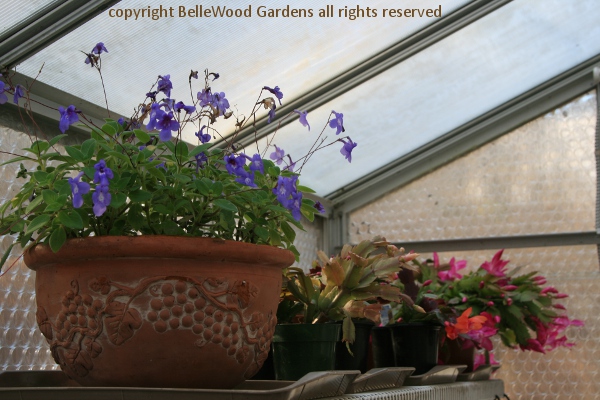
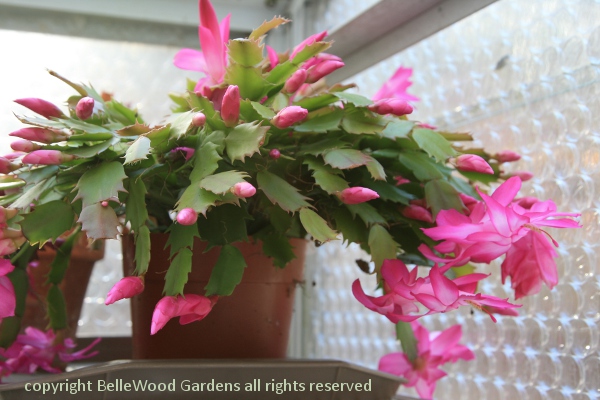
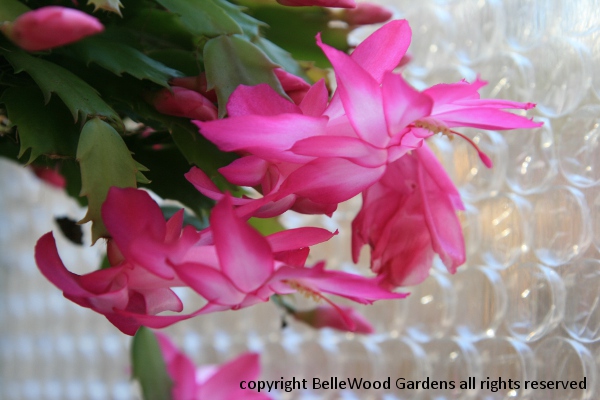
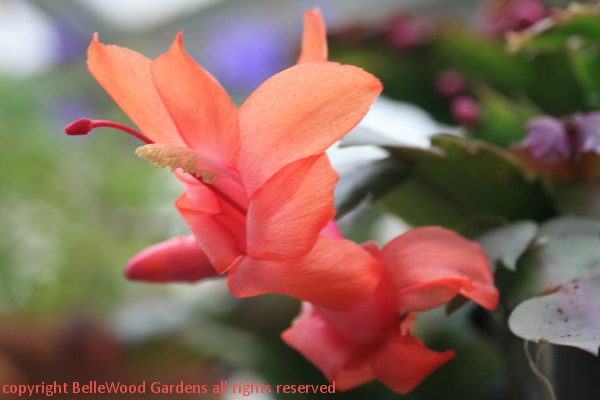
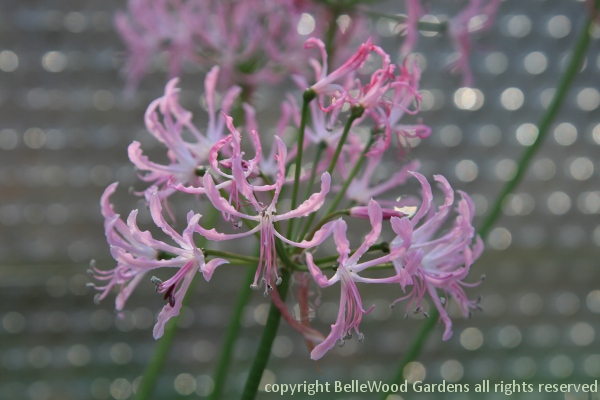
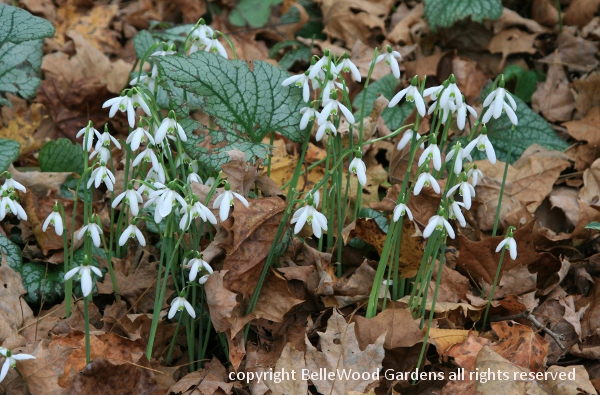
Collected on Mt. Taygetus in the Pelopennese and first described back in 1876, this little charmer is
Queen Olga's snowdrop, Galanthus reginae-olgae. It flowers now, but leaves will wait until Spring.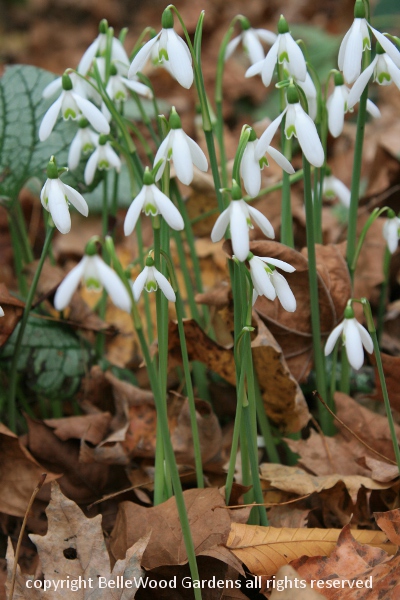
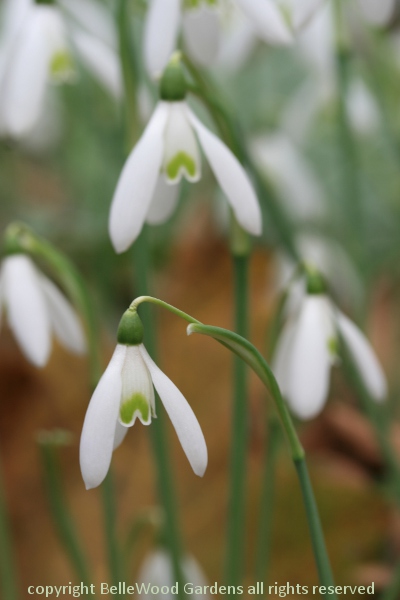
but there's something especially enticing about seeing them in bloom as the seasons fall into winter.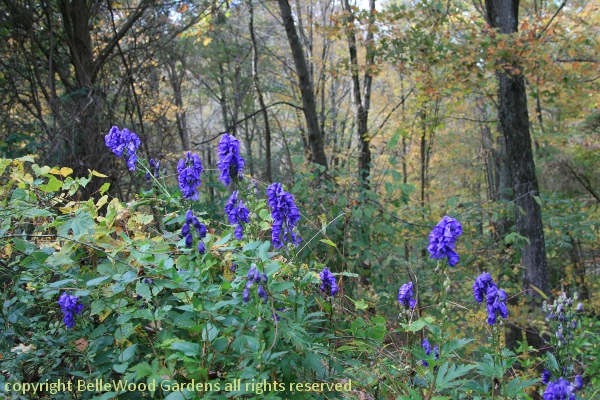
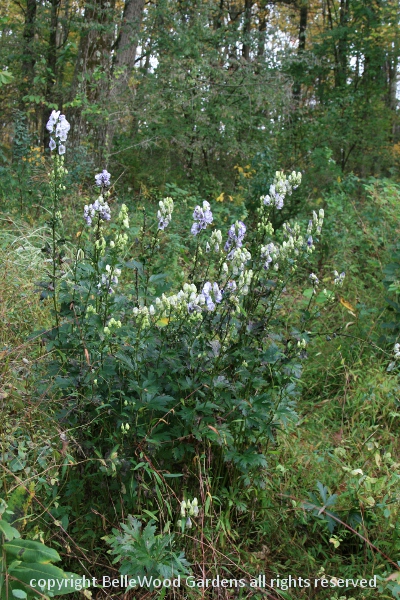
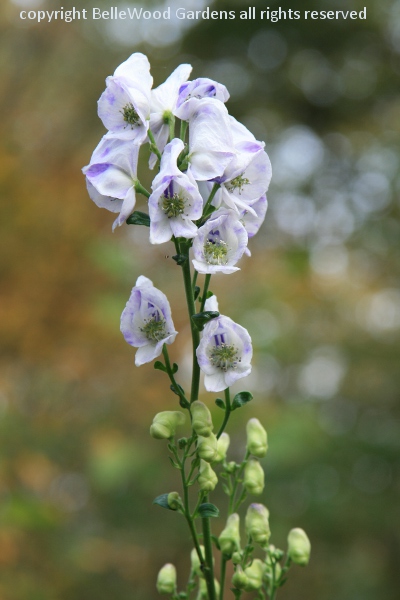
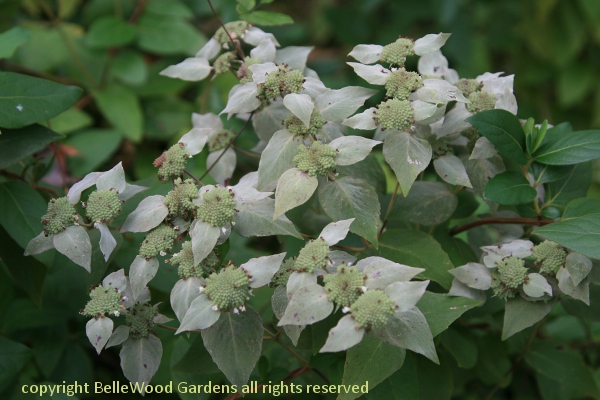
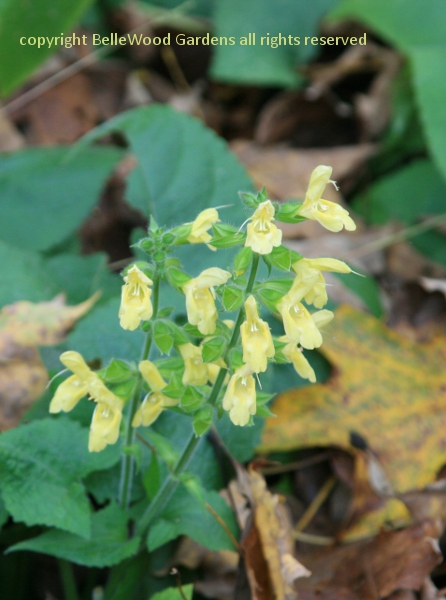
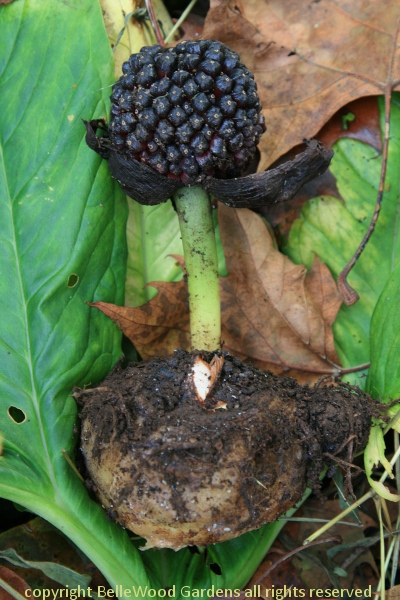
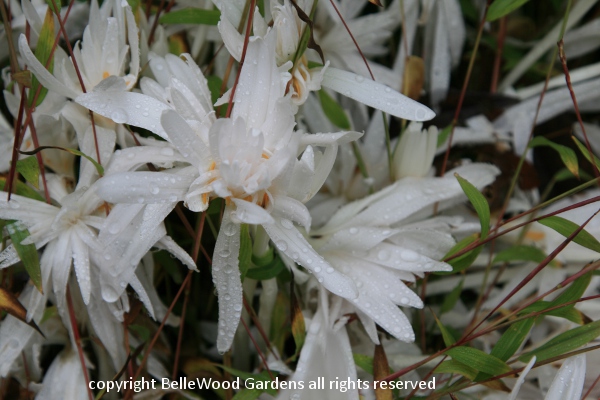
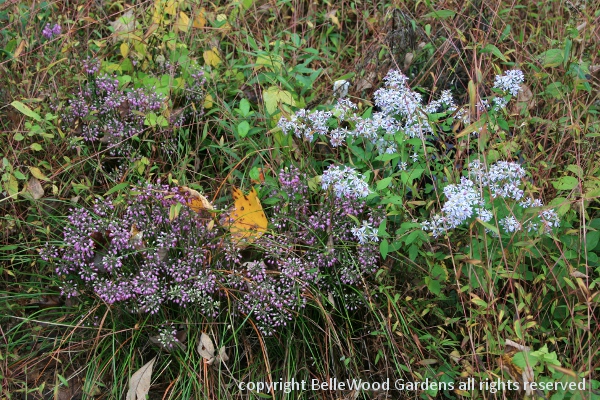
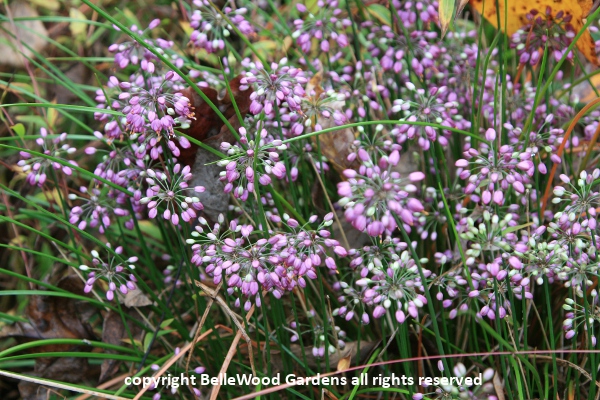
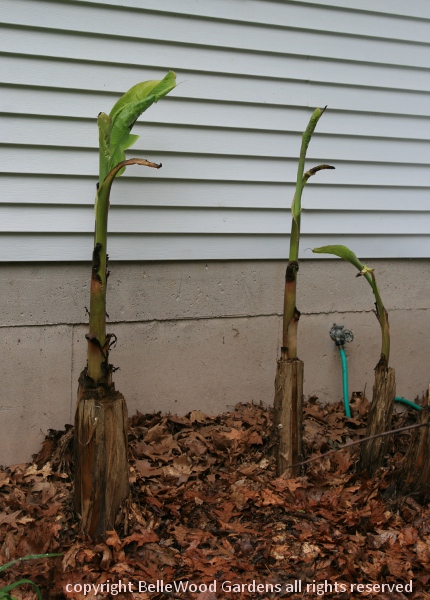
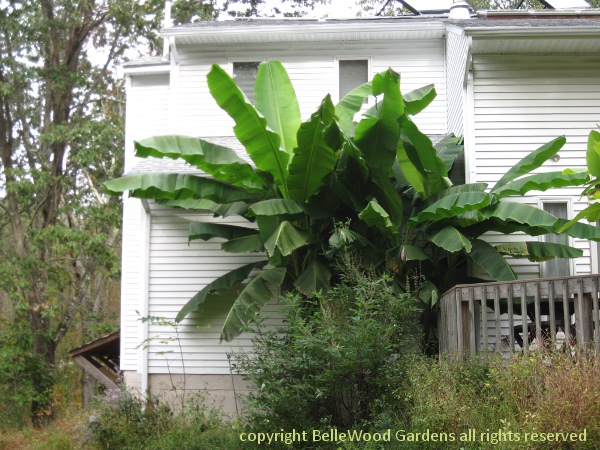
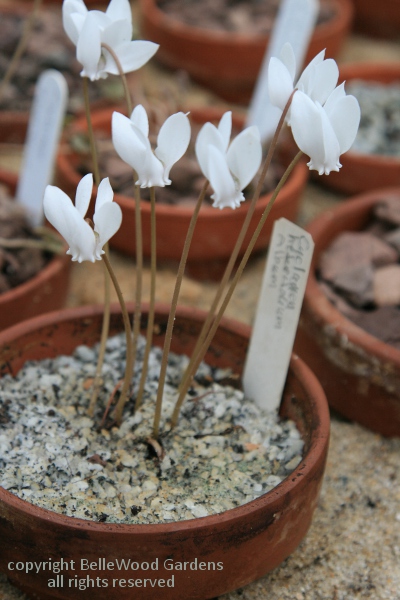
to grow outdoors here at BelleWood Gardens. I keep some in the greenhouse
where I A) notice when they start to appear and B) can enjoy them close up.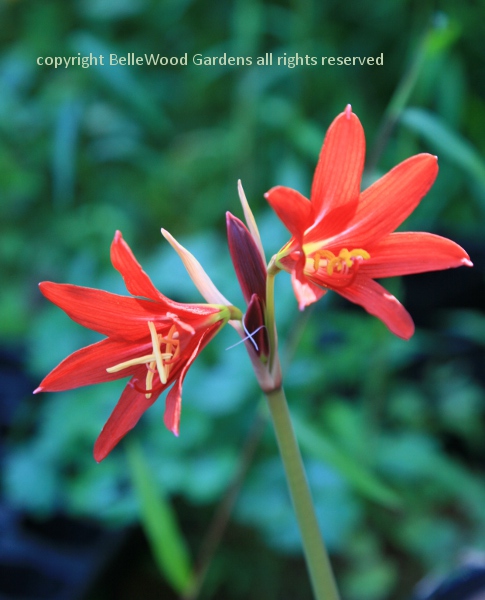
Repot in mid-August, set outdoors before a good rainstorm and voilŗ
in less than a week they're in flower. After which the leaves appear.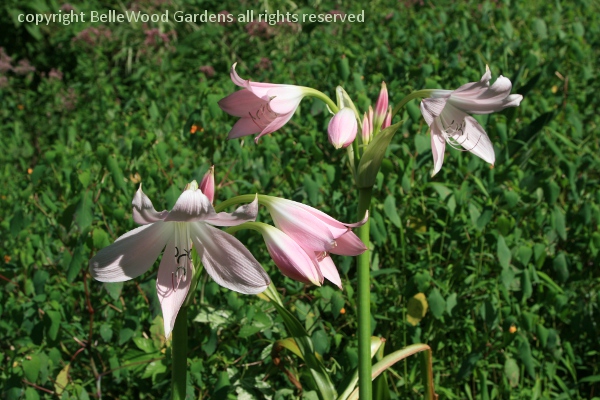
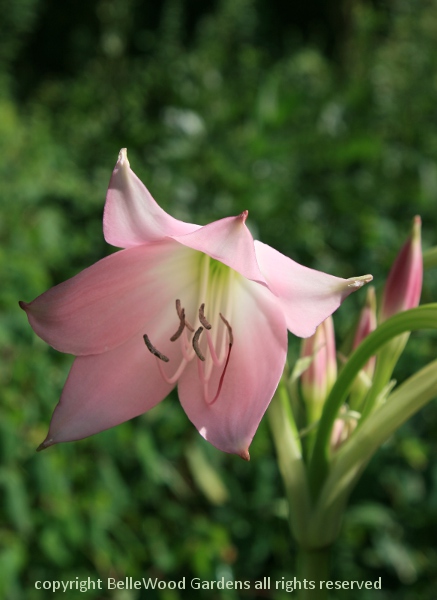
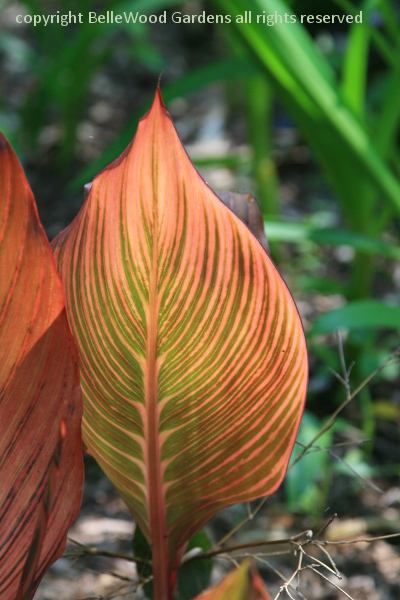
No wonder I've written books on using foliage for garden design. My request
to you, dear visitor, is that you please Consider the Leaf when choosing plants.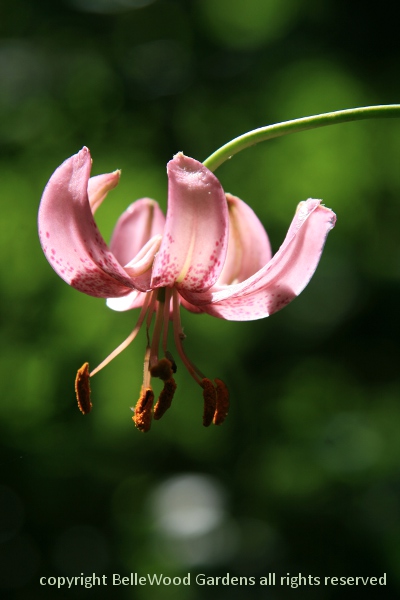
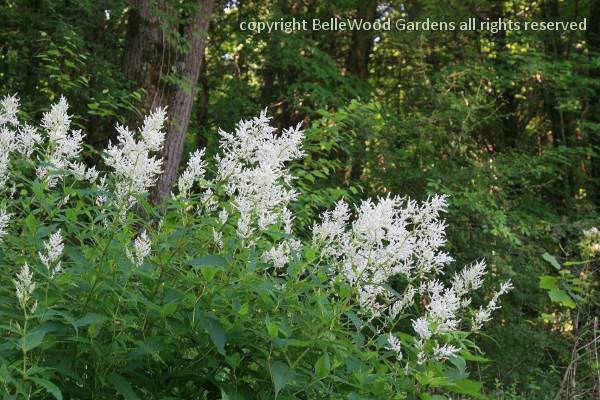
Let me assure you that Persicaria polymorpha is a delightful member of the family, one that's
well behaved, deer resistant, with attractive, long-lasting white flowers like oversize astilbes.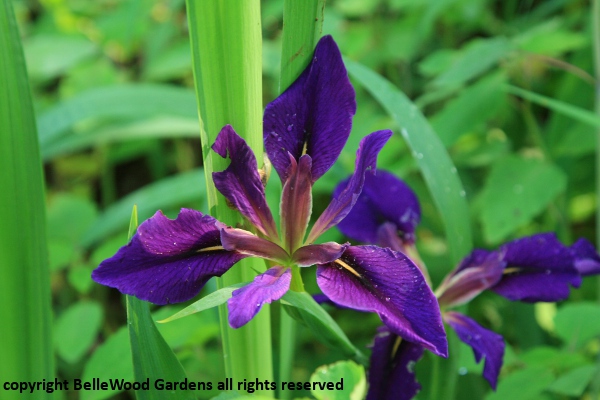
royal purple accented with a golden stripe to lure the bees, a spotlight to the pollen.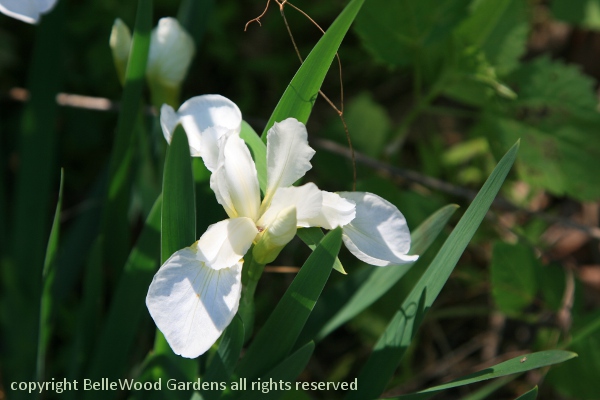
tall. Iris sibirica 'Little White' is daintier in size, suitable for a more forward position.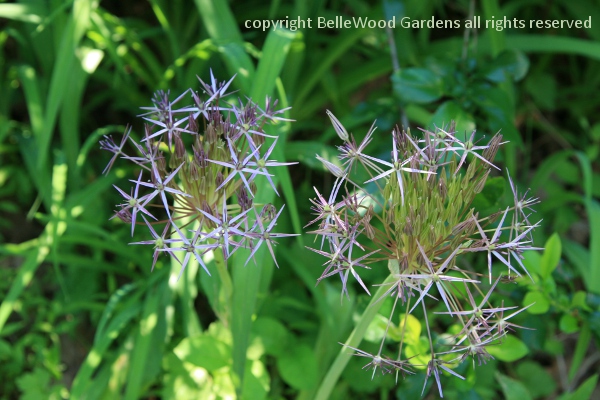
are large enough to make a good show. The individual starlike flowers create an airy bubble,
much the same as a dandelion but far more welcome. Plant in groups of 3 to 5 for best effect.
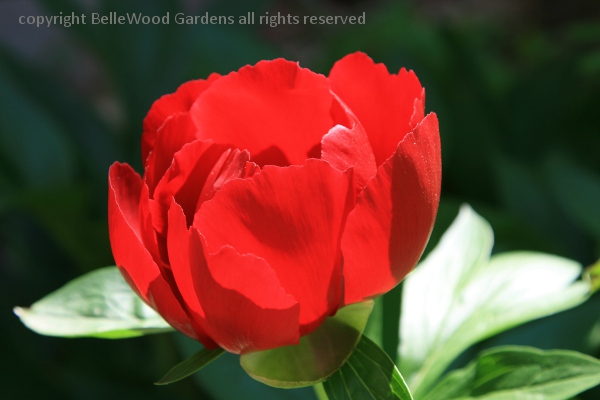 . . .
. . . 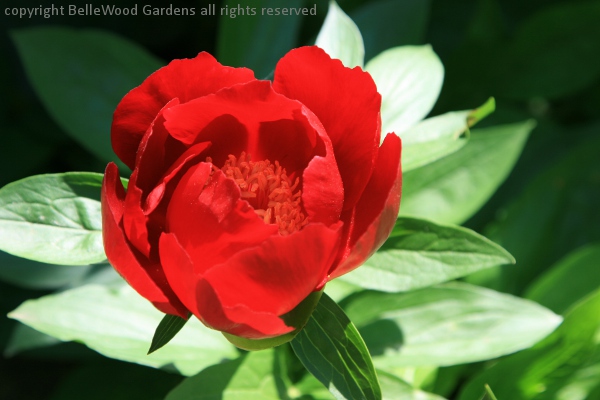
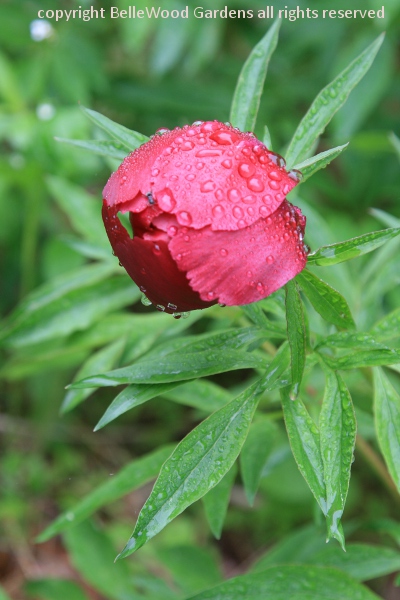 . . .
. . . 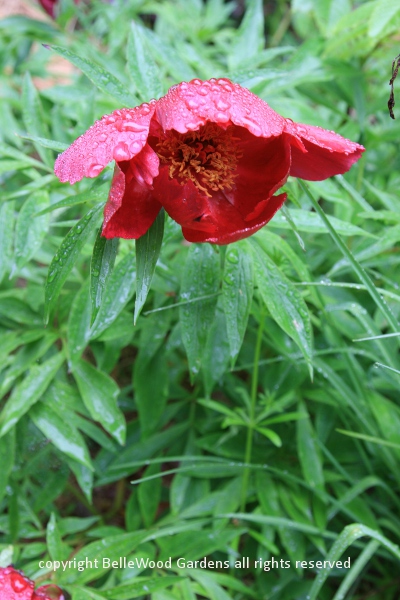
It is a hybrid between P. lactiflora and the fern-leafed dwarf P. tenuifolia. What's not to like.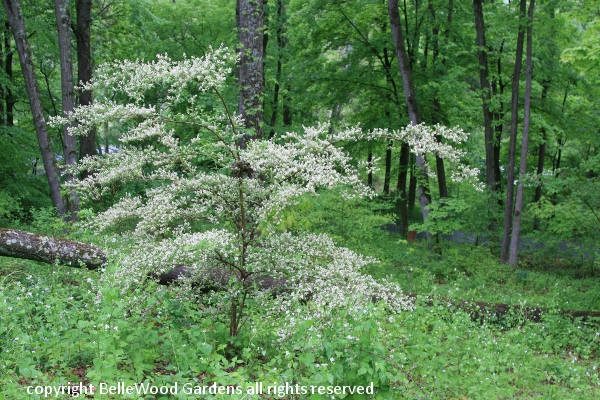
of exquisite electric blue berries, come autumn. Look just beyond it at the massive
fallen oak tree. How fortunate that it was spared in the havoc of last October's superstorm.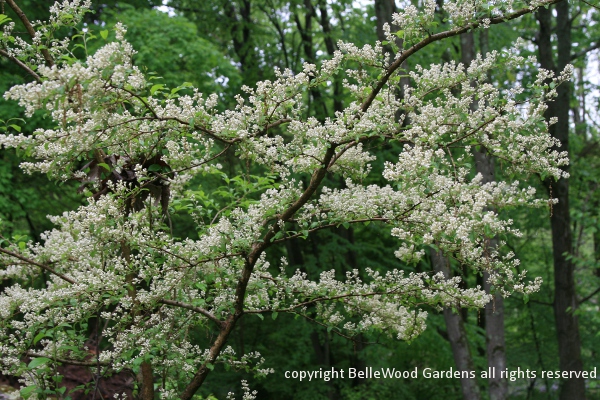

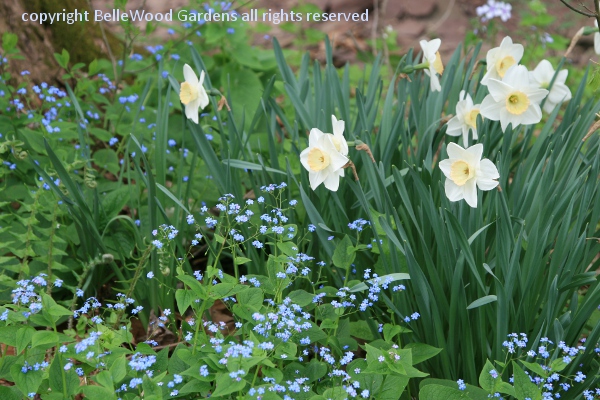
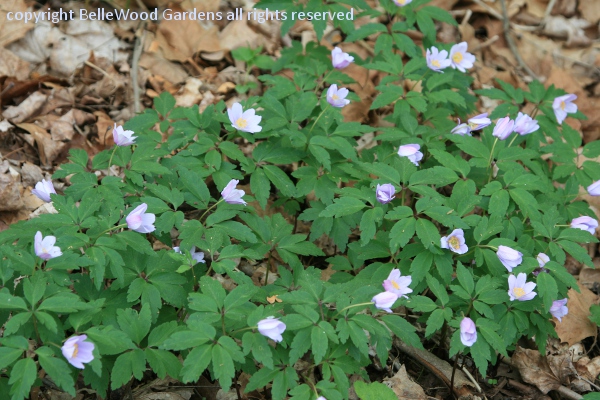
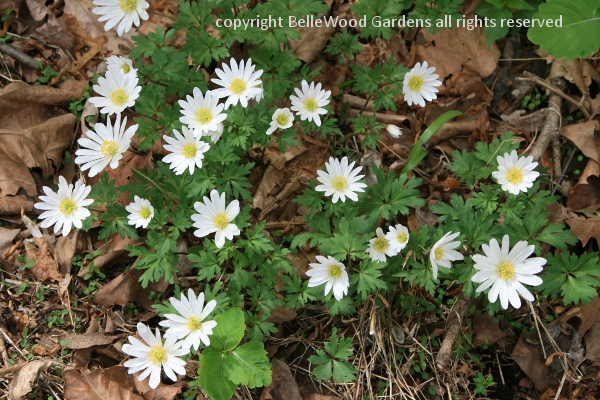
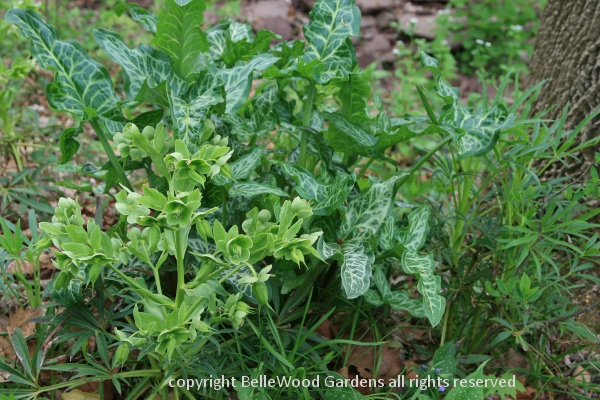
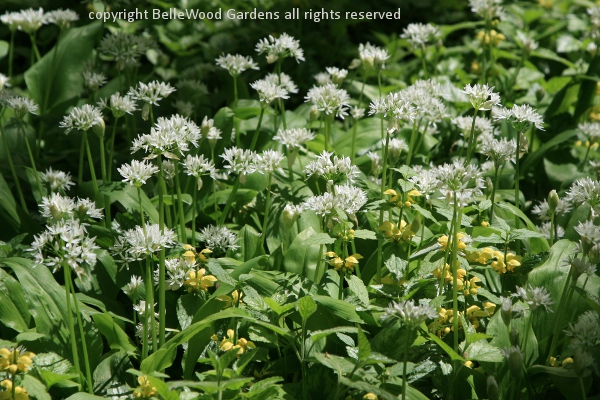
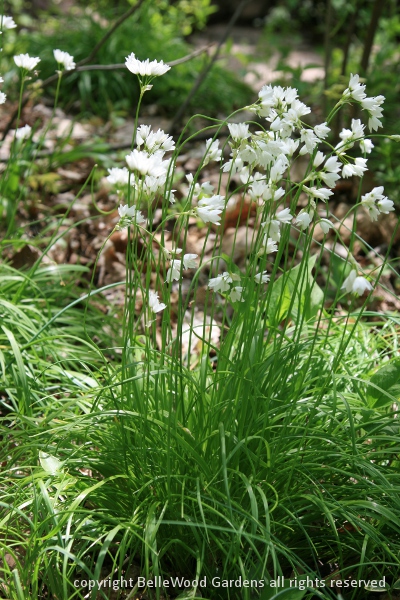
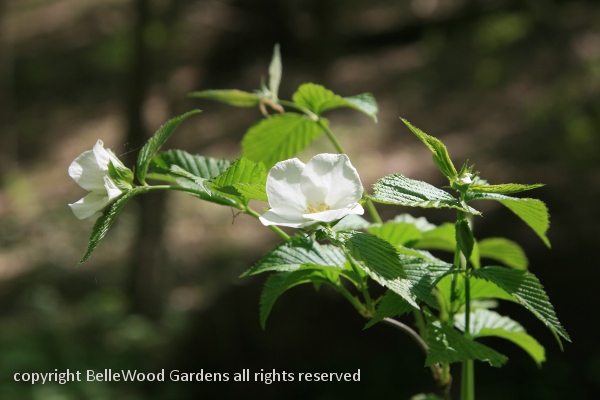
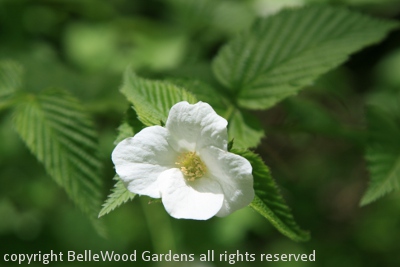
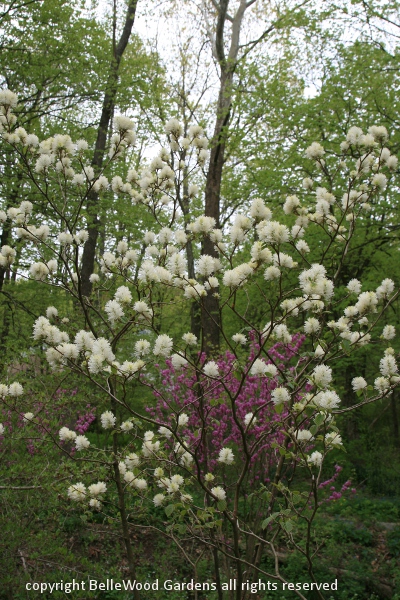
just as the leaves are barely making an appearance.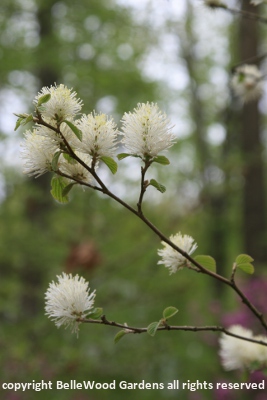
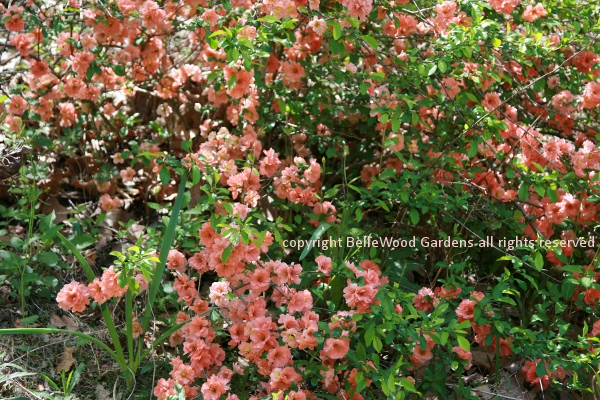
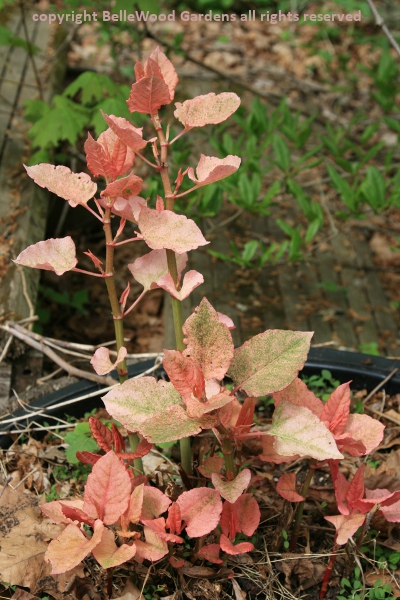
Apparently it is correctly named F. japonica var compacta ''Milk Boy''. It is in
a large plastic, half whiskey barrel size container so it cannot escape and ramble about.
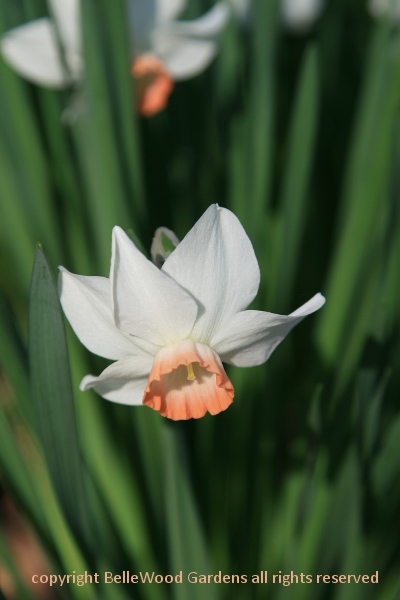
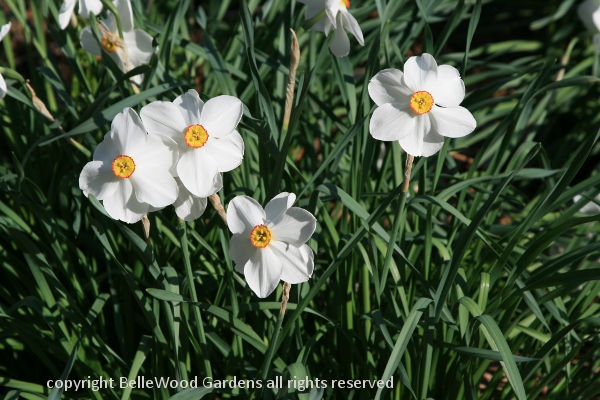
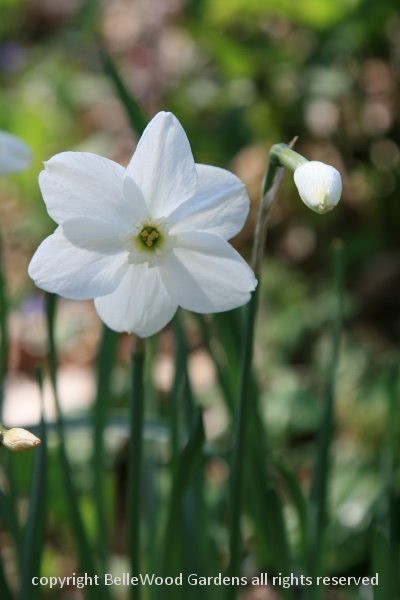
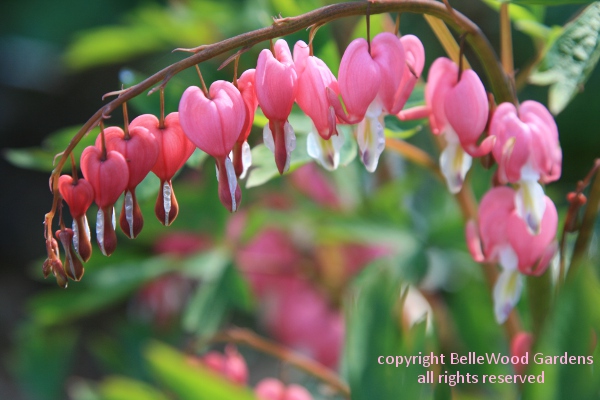
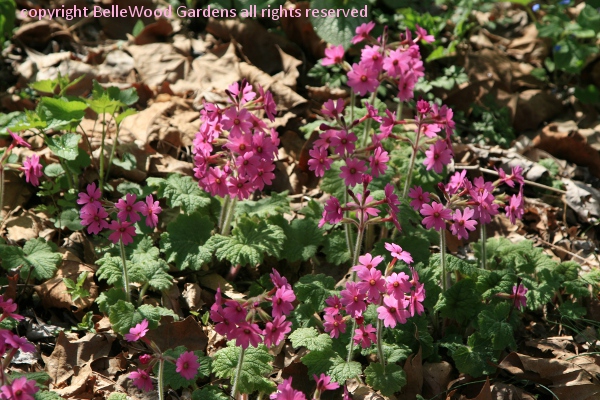
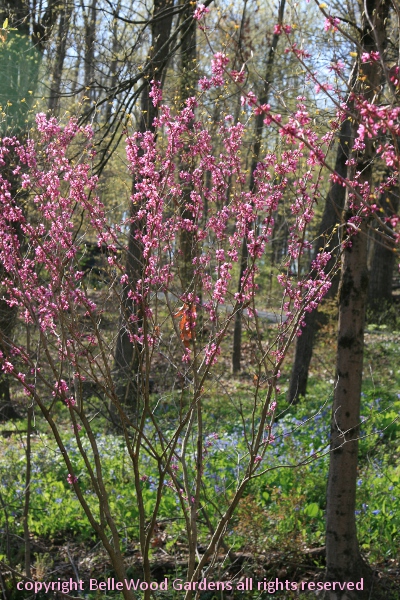
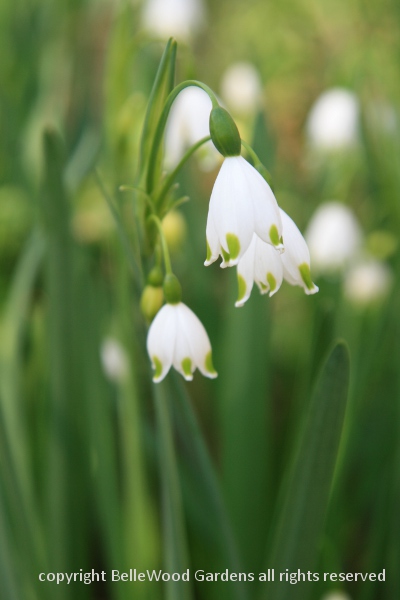
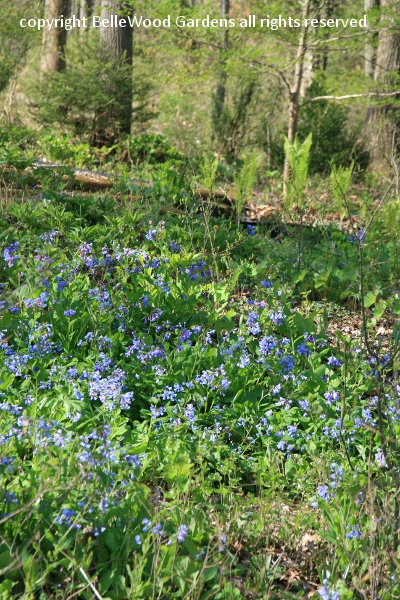
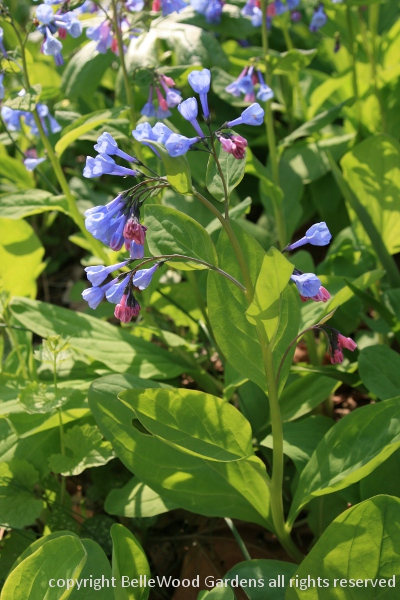
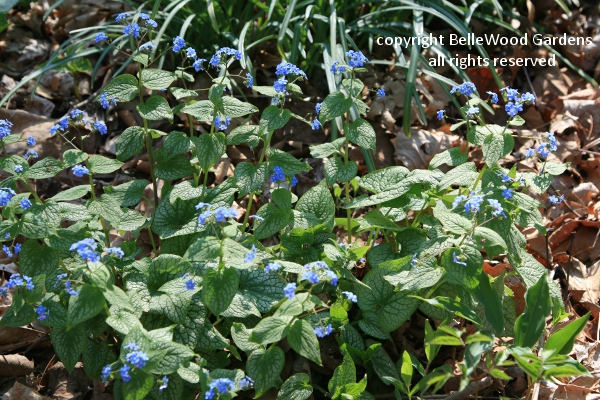
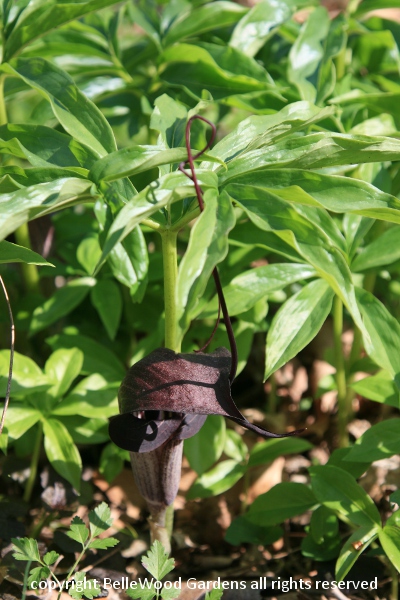
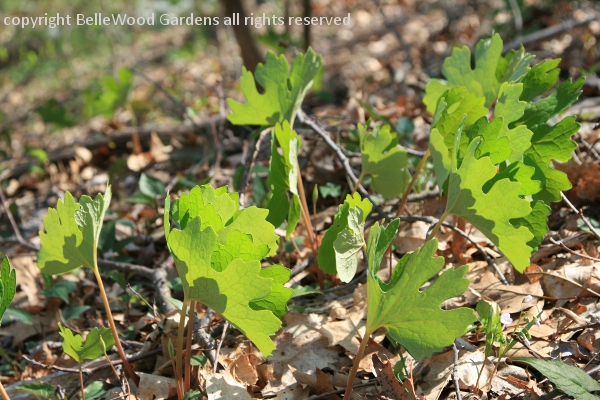
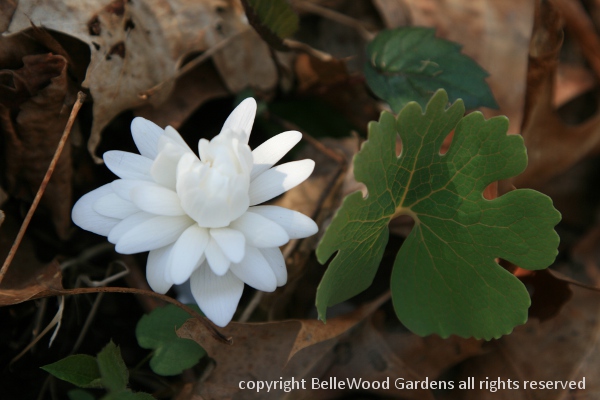
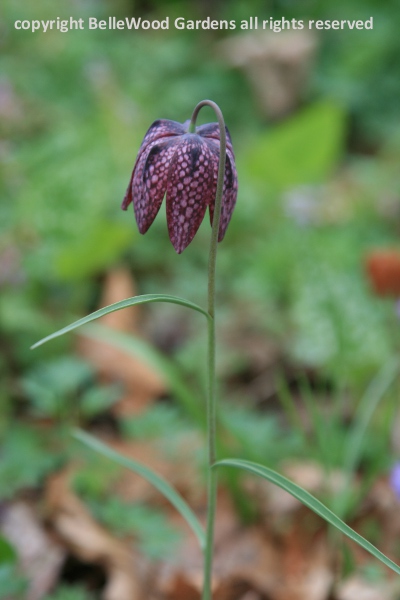
snake's head fritillary. I can see Guinea hen flower since the bird's feathers are
checkered like the flower. Perhaps I'll just stay with the Latin, Fritillaria meleagris.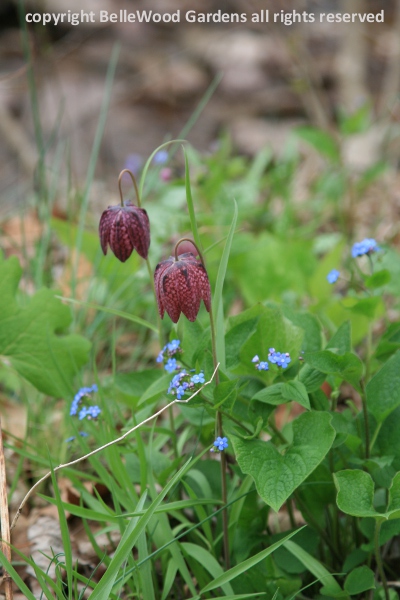
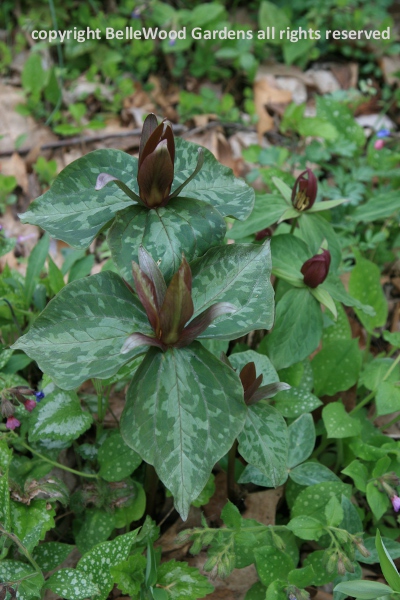
and candle-flame shaped flowers of the sessile trilliums. They enjoy their home here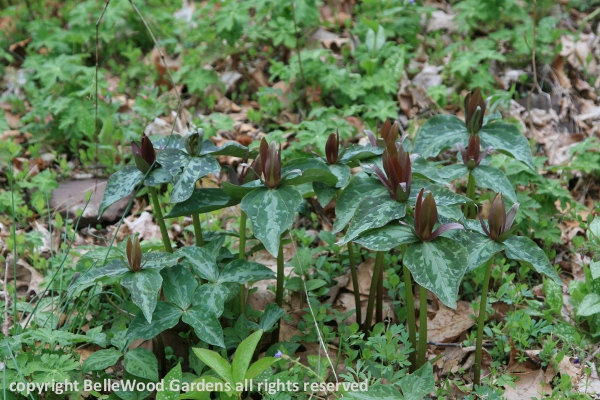
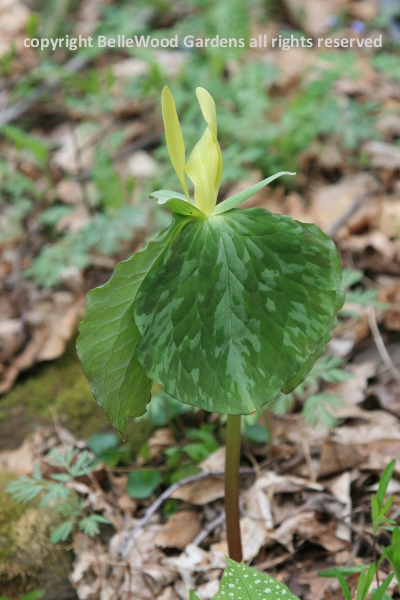
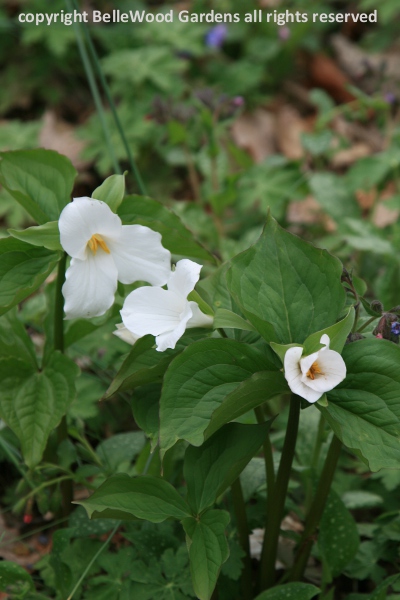
Pedunculate just refers to the little stem or peduncle that separates flower from
foliage. Leaves are plain green, no mottling, and the flower opens more widely.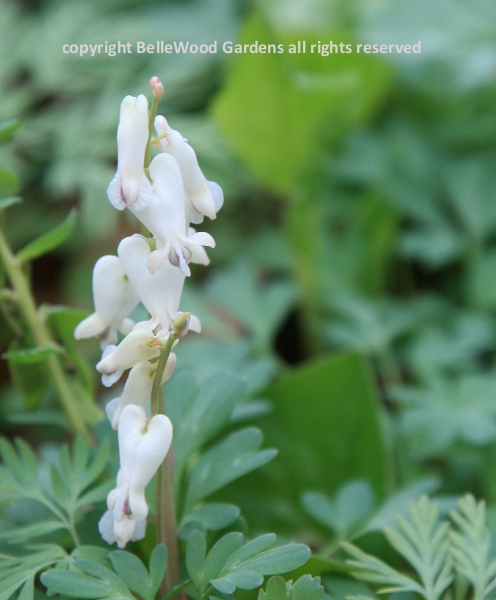
The common name is attributable to the yellow, kernel-like scales that form the bulb.
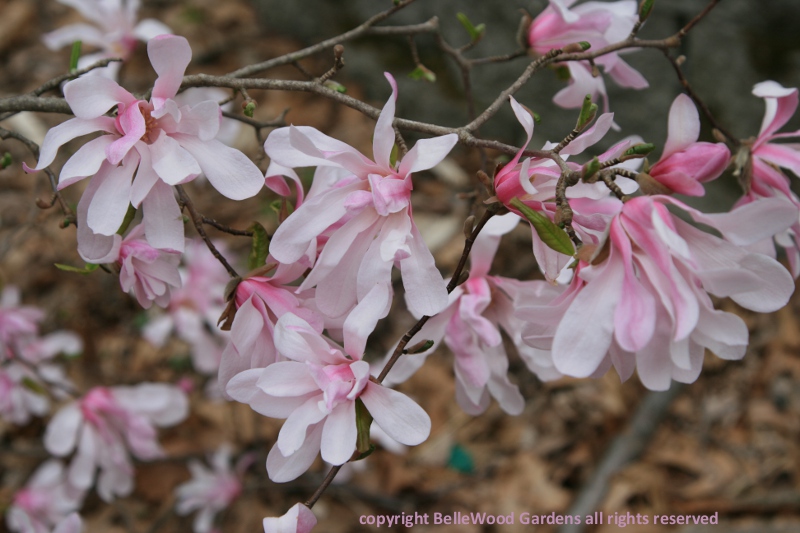
two 85 year old oaks that toppled in Superstorm Sandy straddled the Magnolia stellata rosea and left
it unharmed. This Spring it is flowering better than ever before.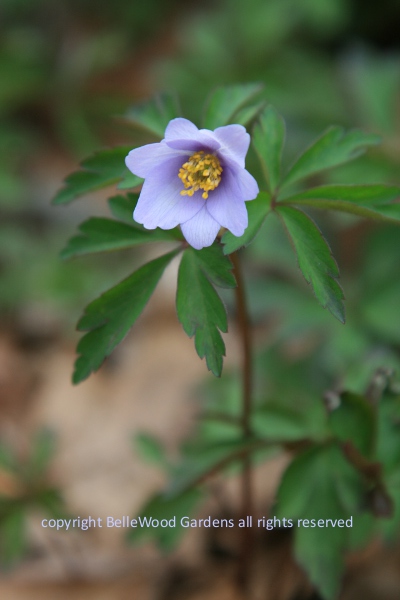
It grows from a twig-like little rhizome, flowers in Spring, then vanishes underground until next year.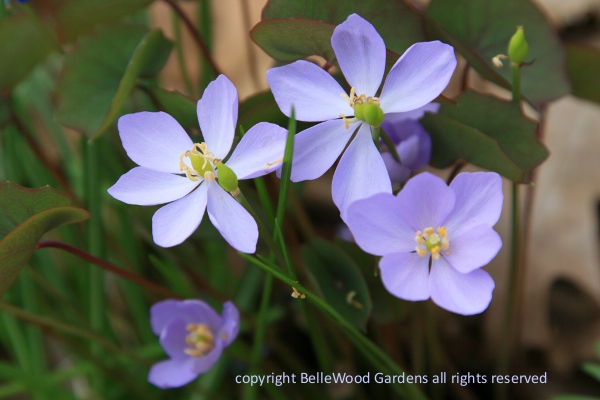
Purple-burgundy flushed new leaves that mature to green compliment the soft lilac flowers whose petals
quickly drop off. The seed capsule looks like a little jug whose lid opens so roughly that seed is scattered.
Since older plants hate to be moved, seed I sow doesn't germinate, these self-sown seedlings my only option.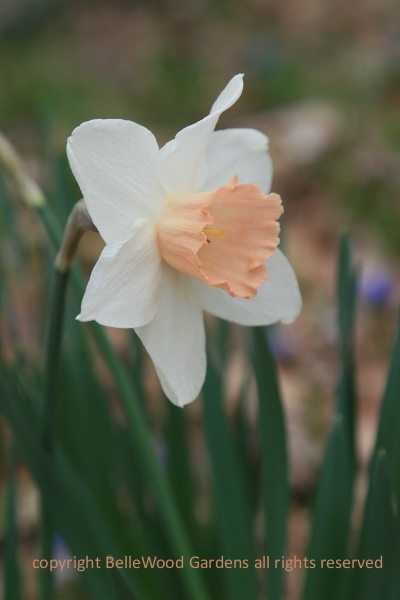
has given the salmon-pink trumpet on this narcissus a really beautiful color, no heat to fade it.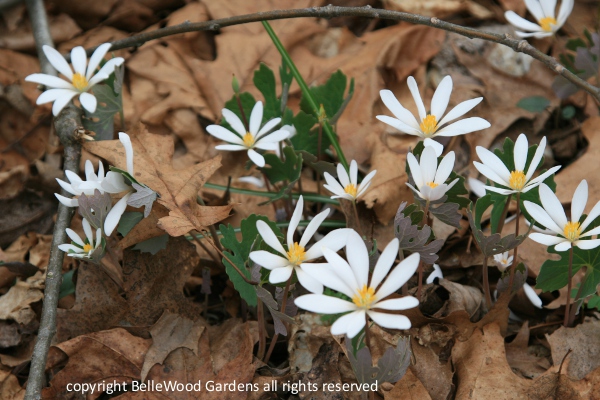
The daisy-like petals soon drop. Fortunately the bold, handsome flower remains throughout the growing season.
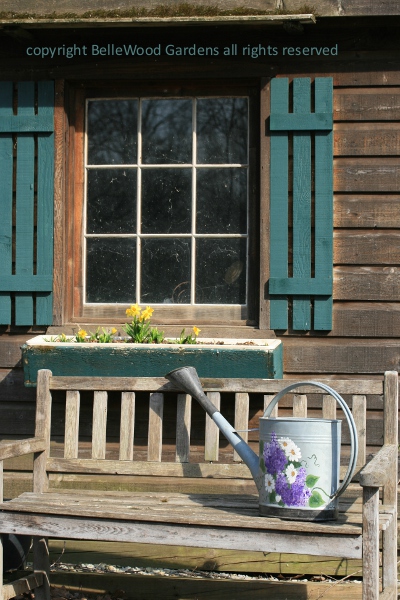
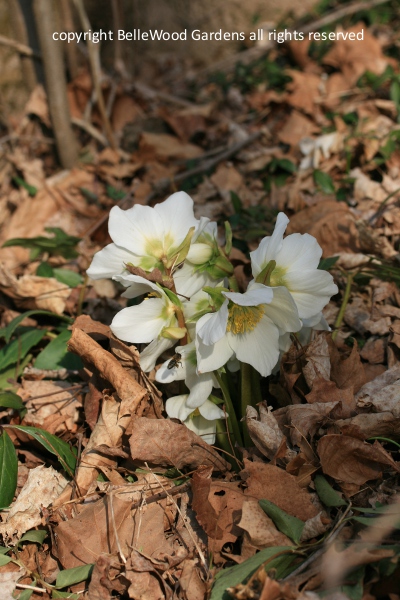
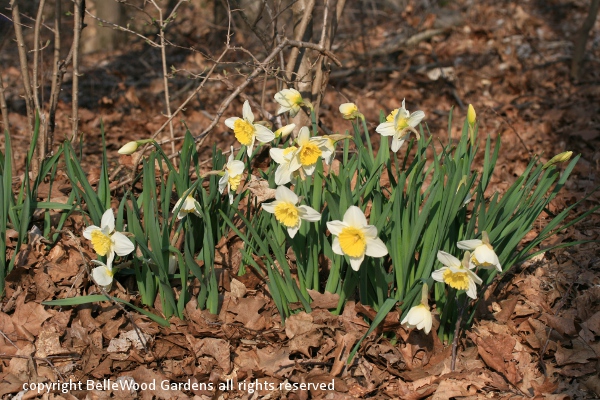
what's not to like. With a yellow cup when the flower opens, softens to a paler, creamy ivory shade.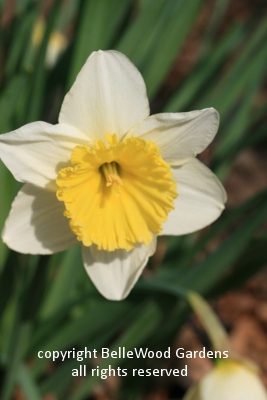
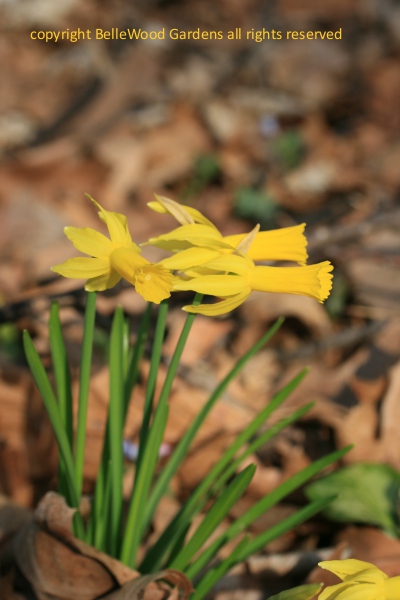
its group 6 offspring, with reflexed petals flaring back (but not always so abruptly.)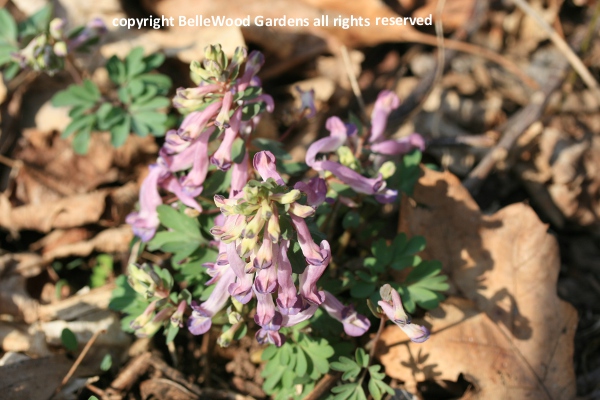
and mauve flowers will have to take their chances when they grow in a path. In any case
they'll all quickly go dormant as trees leaf out and the cycle of shade matures in the woods.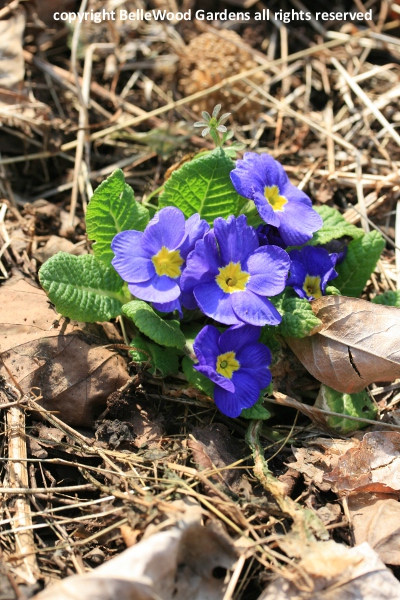
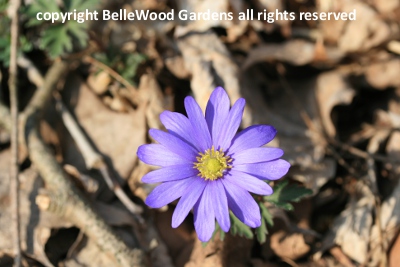
various shades of blue. Here's the charming Grecian wind flower, Anemone blanda.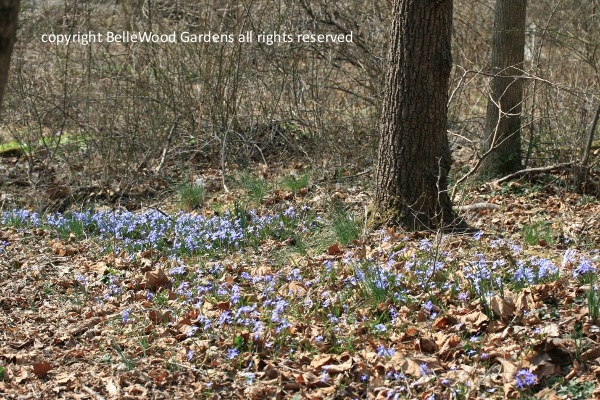
seeding about in the woods. Understandably so, when you check out the bees that visit.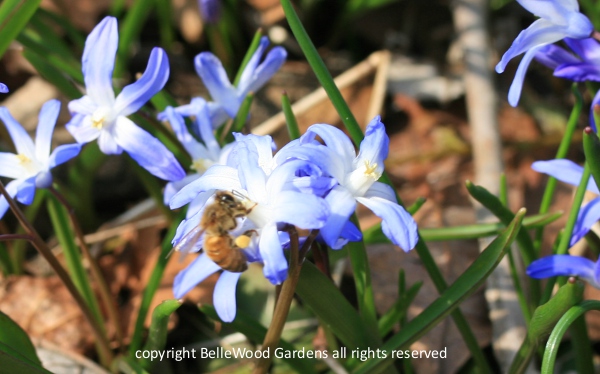
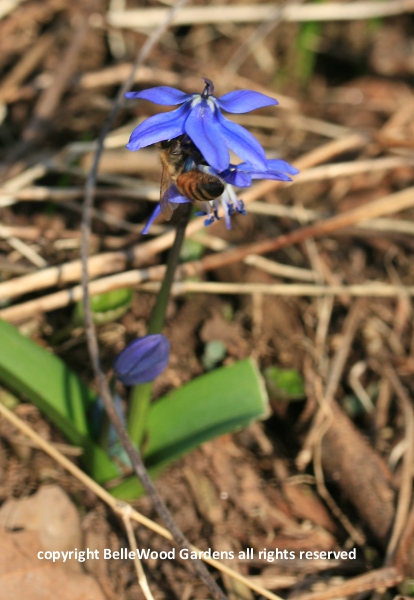
a natural hybrid between the two genera, ◊ Chionoscilla intermediate between the two,
and said to be very variable. How would I tell? There's another natural hybrid reported
◊ Chionoscilla allenii, between Chionodoxa forbesii and Scilla bifolia below.
I have all three genera in the garden, they're flowering simultaneously, and there are bees . . . .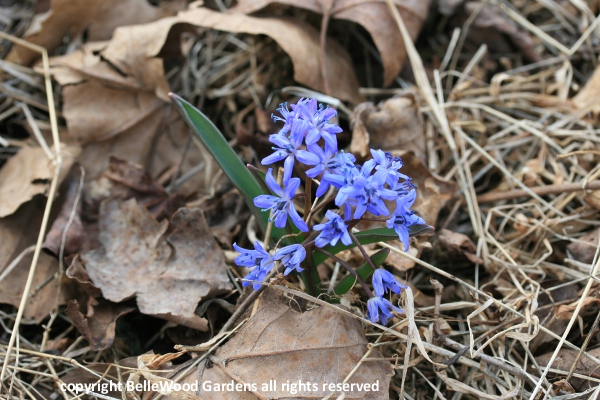
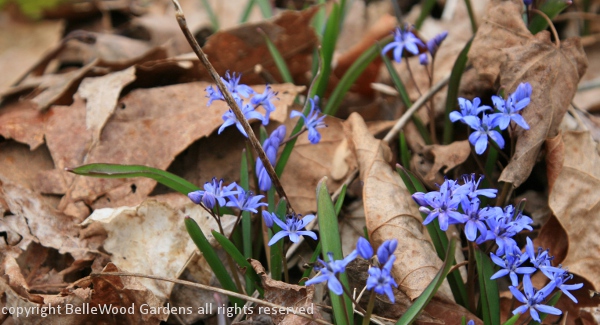
'minor' bulbs, not for any lack of interest but rather, for its dainty size. Happy in light woodland,
increases nicely but not invasively, and forms a pretty blue carpet under deciduous shrubs.
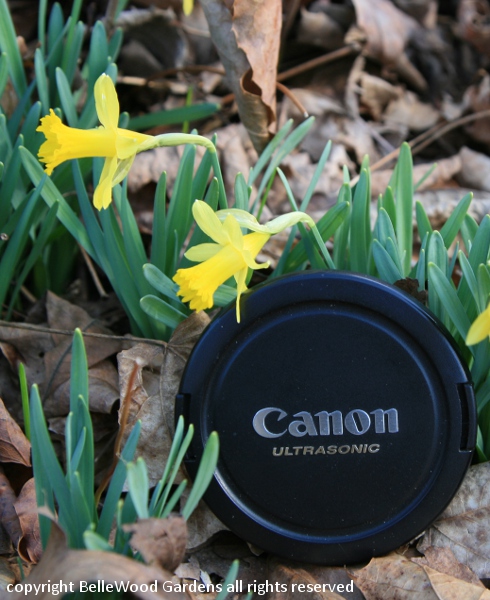
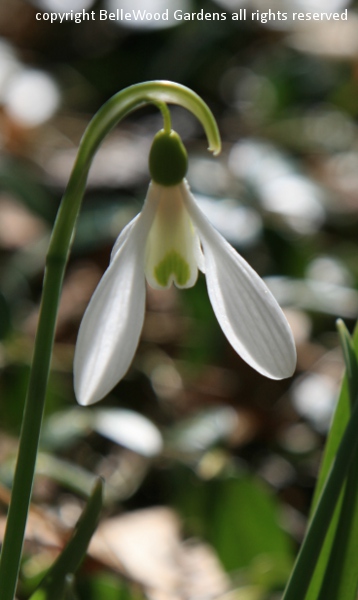
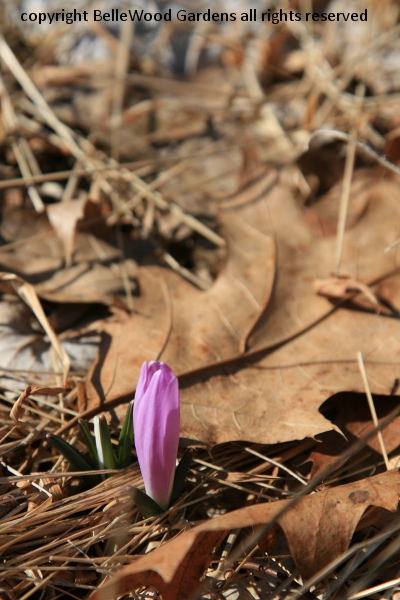
Colchicum vernum. Good thing plants know who they are as we keep changing things.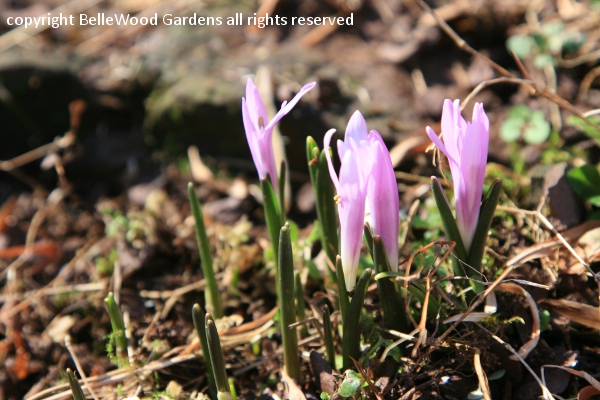
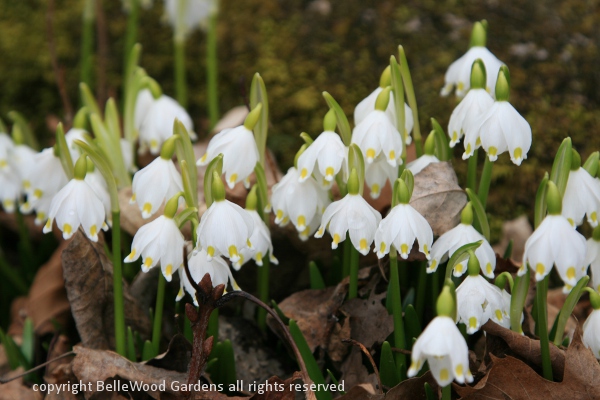
come pushing through, encouraged by the longer, stronger sunshine. From just a few, now a colony of
spring snowflakes, Leucojum vernum thickly crowd together, a carillon of bells to chime and welcome Spring.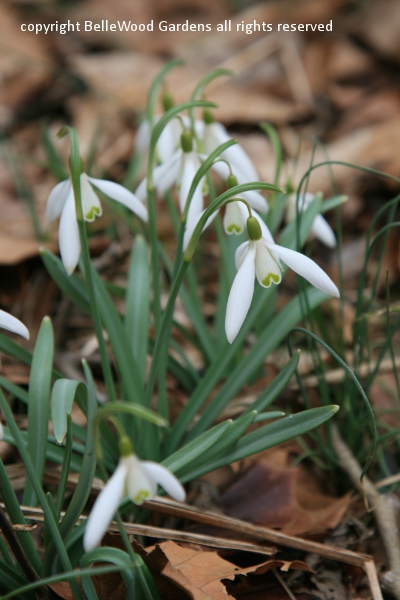
whose names were washed away in a past flood. Other, earlier snowdrops lower on this page
from 2 March. This one is Galanthus 'Atkinsii'. For more about snowdrops take a look here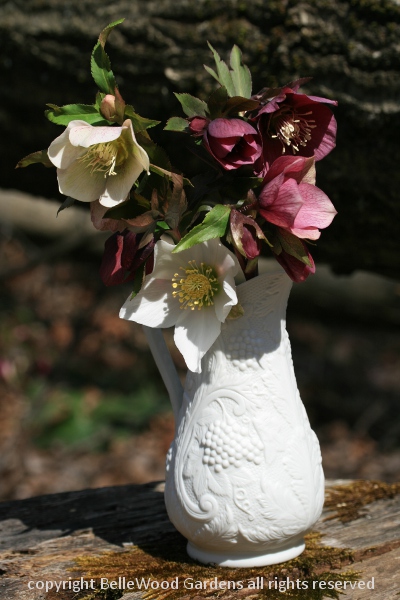
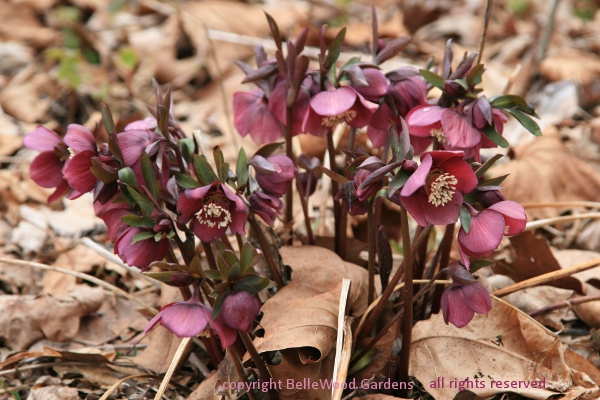
expanding their purple flushed young leaf shoots and welcoming me into the garden. I adore
the contrast between the flowers ivory white stamens and the rich color of the sepals and petals.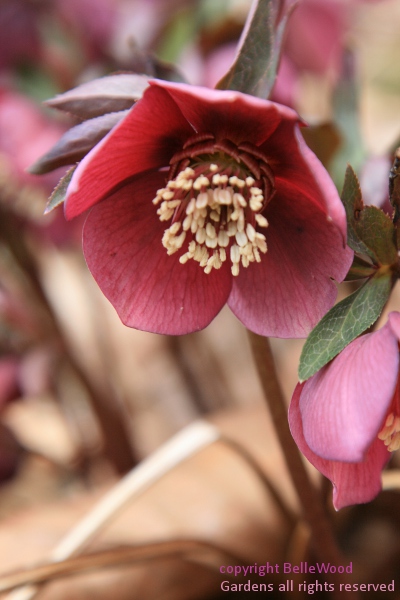
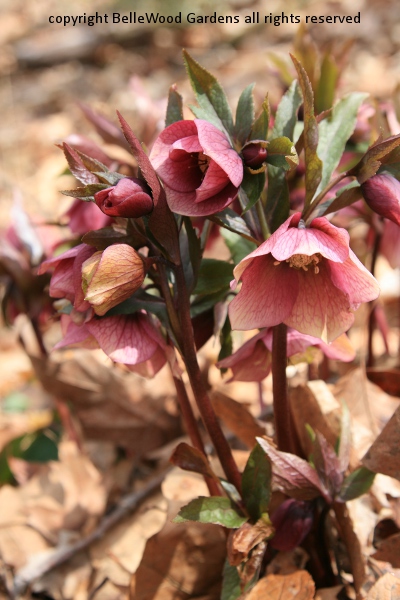
an interesting not-quite-bicolor effect with buff colored buds opening
to rose pink flowers. I suspect an Early Purple Group plant was involved.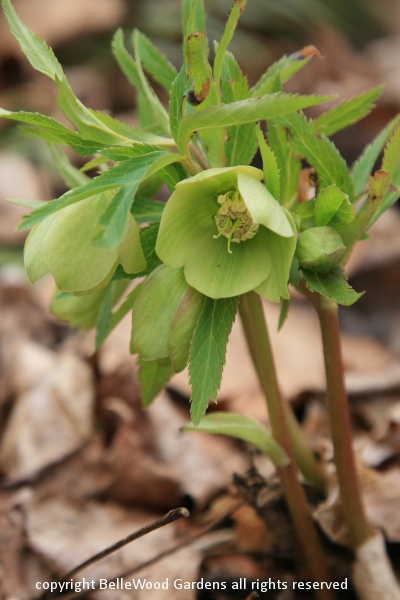
I like the occasional green flowers, such as this Helleborus viride.
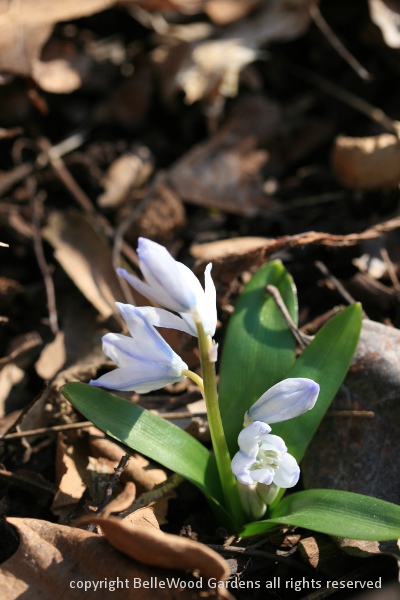
as skim milk, with a turquoise stripe embellishing each petal. So eager to bloom
that the flowers open before they are quite above ground. Lovely in the sunshine.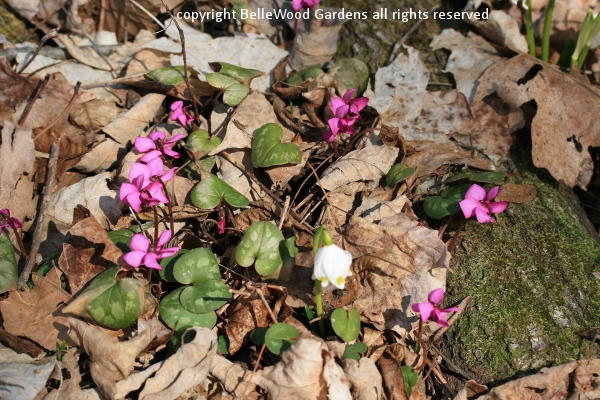

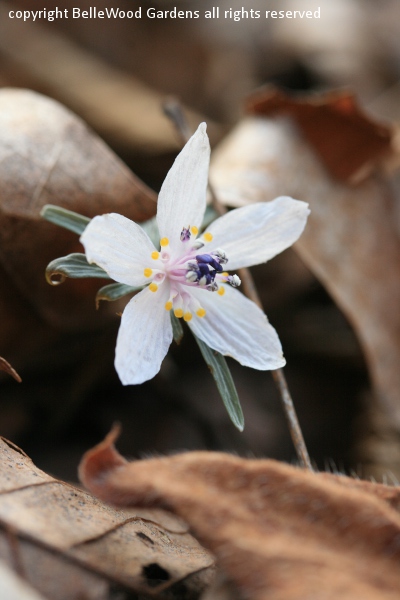
sent by a Japanese friend. Sow where it is to grow, he said, and never transplant.
It seems happy, doesn't bulk up, but each year I appreciate it ethereal flowers.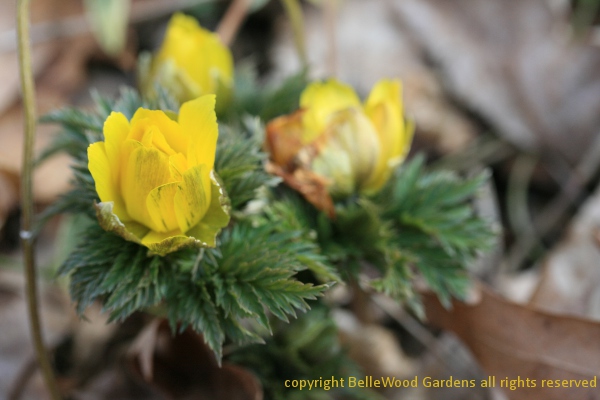
It is apparently sterile, as I've never found seeds or seedlings. Propagation is by division
and I'm hesitant to dig it up and take a knife to its thick tangled rootstock. Fugacious, it
will soon go dormant. Another harbinger of Spring to enjoy while it makes an appearance.
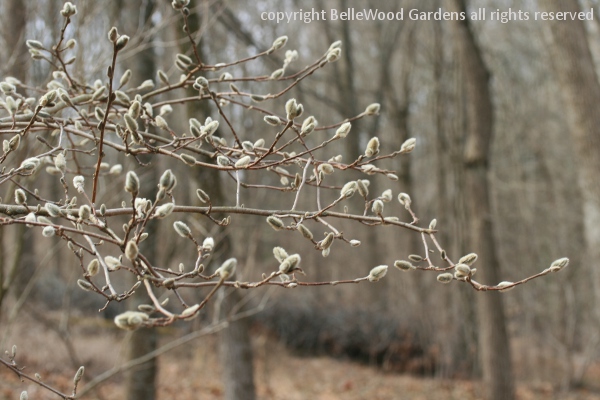
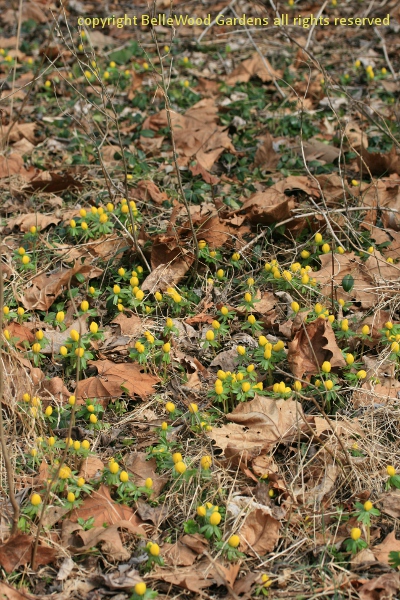
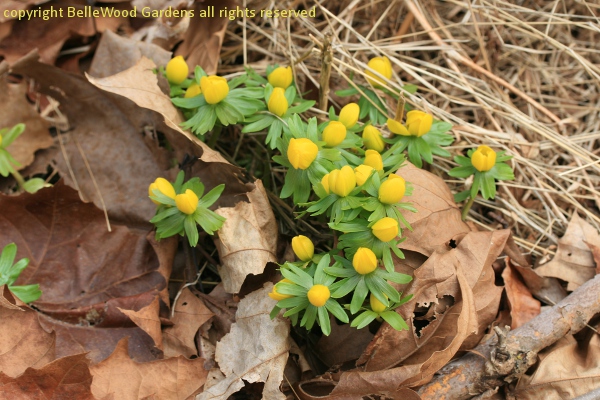
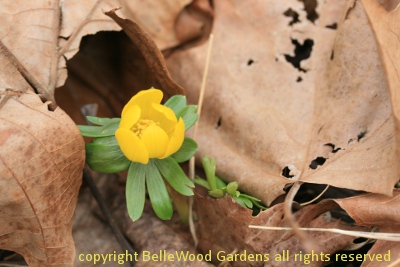
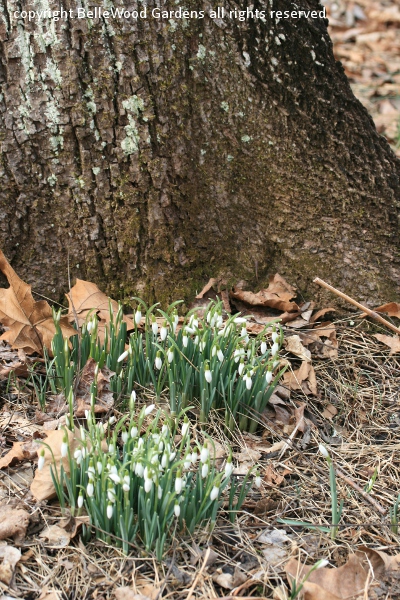
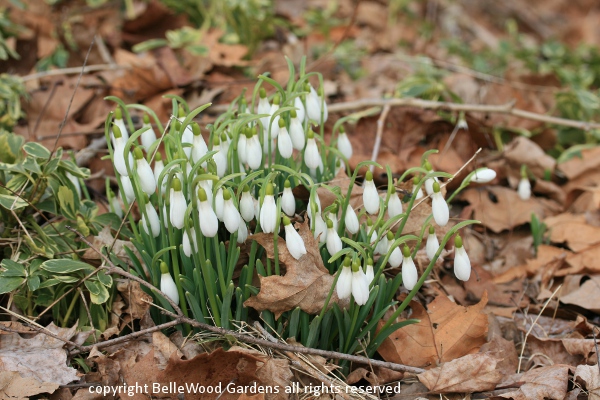
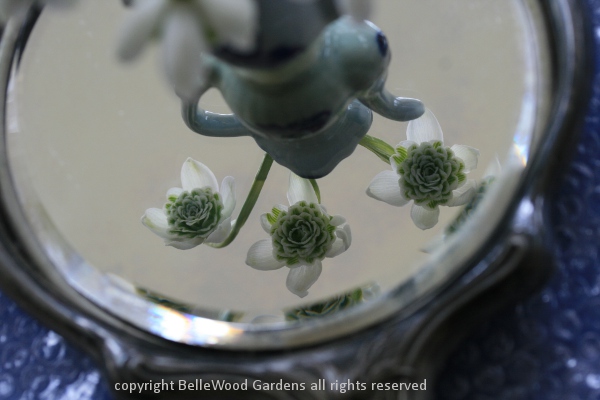
is Galanthus plicatus 'Hill PoŽ', as distinguished by its 5 outer perianth petals and neat, tidy inner rosette
made up of 18 to 24 segments. Found in Ireland in the 1930s. Described as easy to grow and reasonably quick to increase.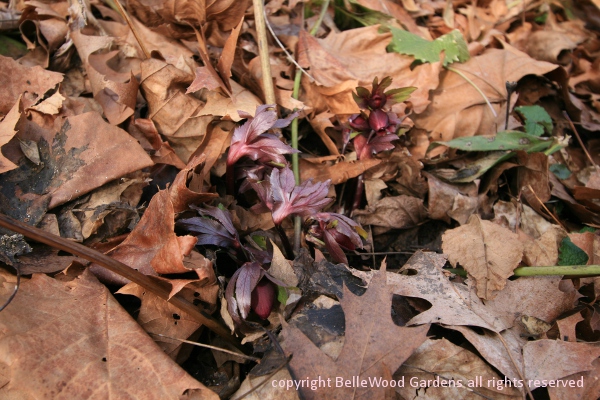
with its intense, dark plum colored flowers and even leaf shoots flushed with purple.